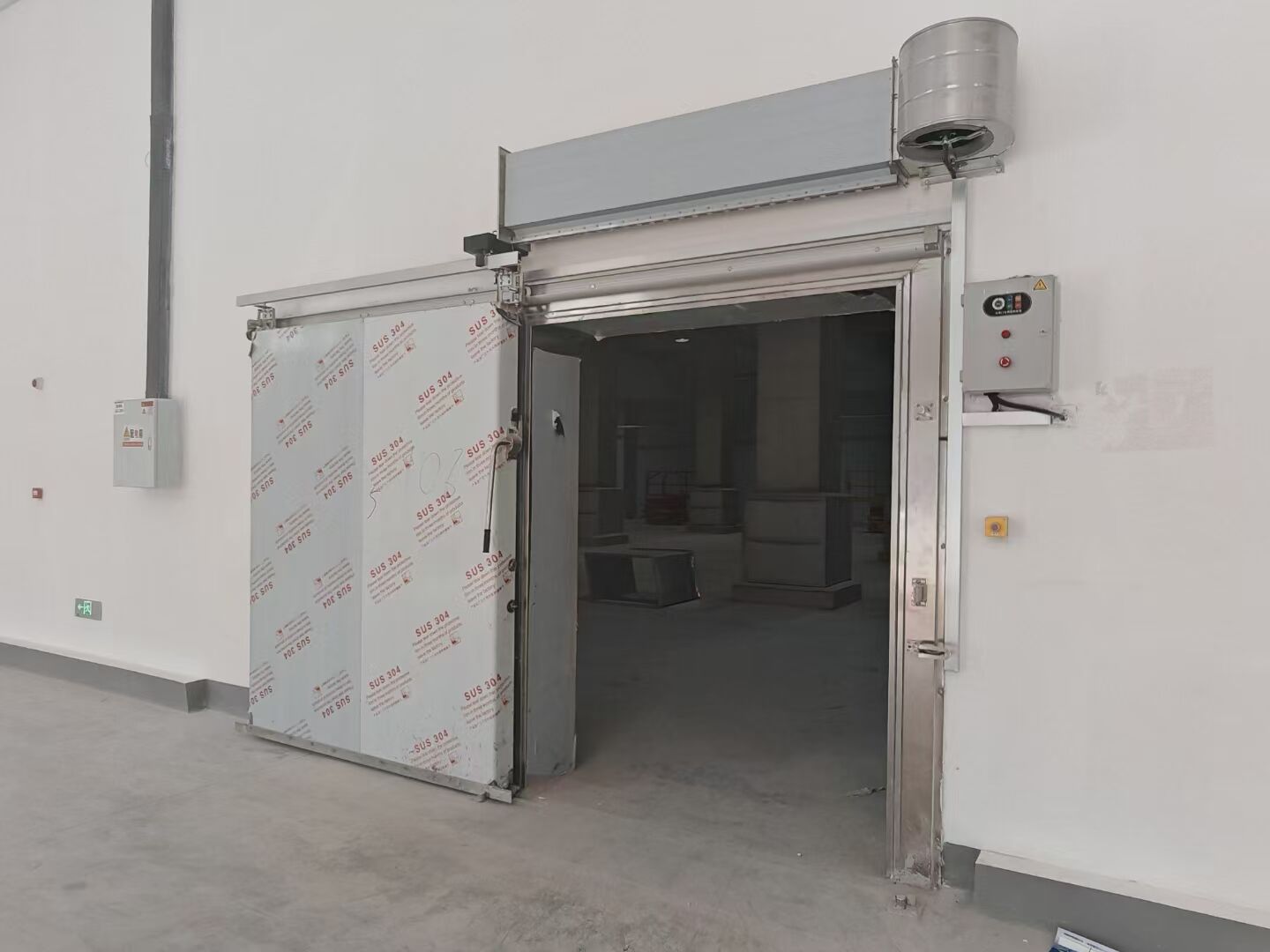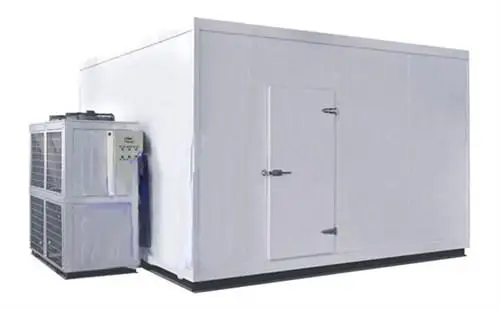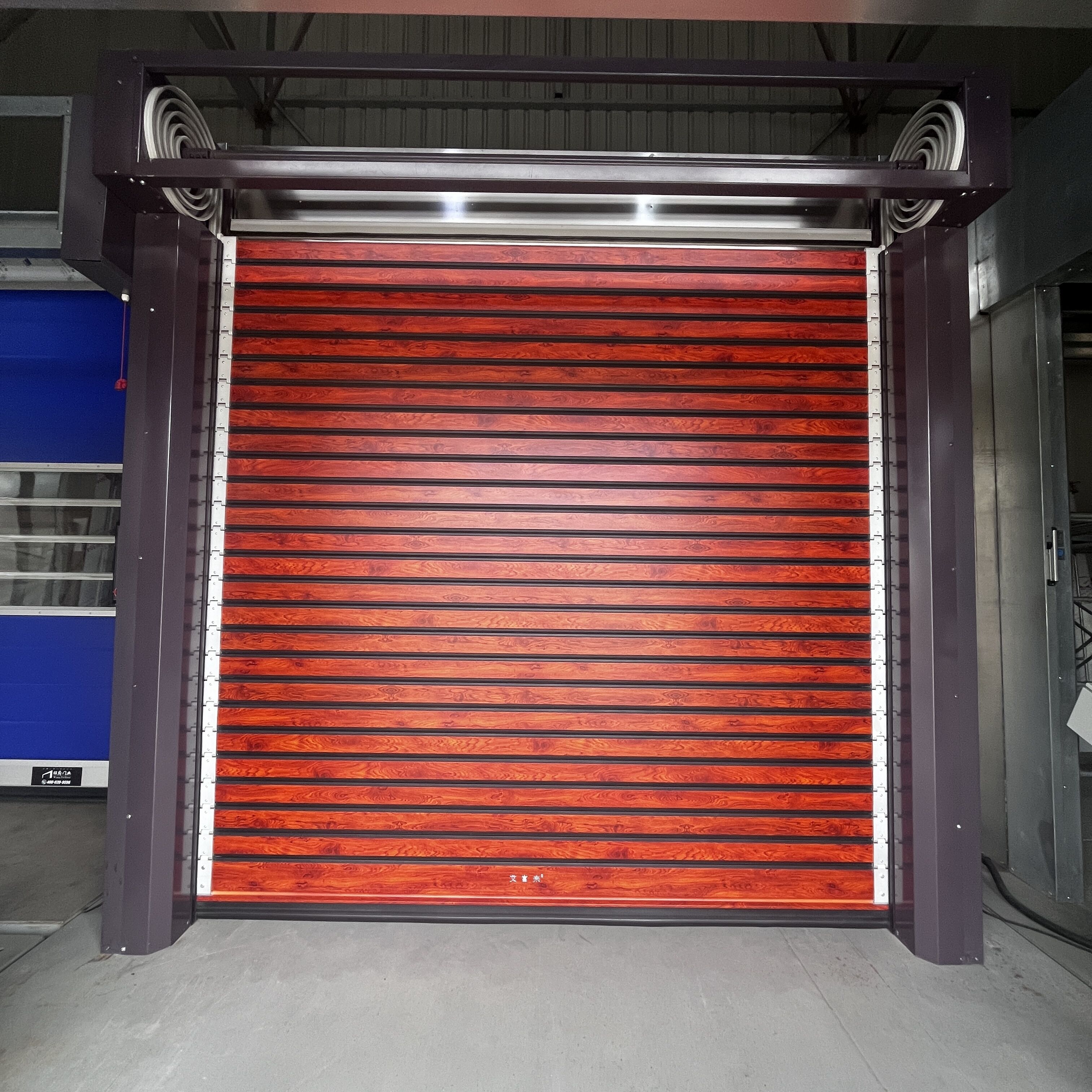Understanding Thermal Insulation and Energy Efficiency in Cold Room Doors
The Role of Insulation Performance in Maintaining Temperature Stability
The way a cold room door insulates makes all the difference when it comes to keeping things at the right temperature inside. Doors with good thermal resistance basically stop heat from getting in from outside, which helps keep those delicate products safe and takes some pressure off the cooling system. These days, manufacturers are putting some pretty smart materials into their door designs. Even places where people come and go constantly throughout the day can still benefit from these improvements. The result? Better temperature stability across the board while saving quite a bit on energy bills in the long run.
Common Insulation Materials Used in Cold Room Doors and Their R-Values
Key insulation materials include:
- Polyurethane foam (R-6.5 per inch): Delivers excellent thermal resistance and structural strength.
- PIR (polyisocyanurate) foam (R-7.0 per inch): Offers superior fire performance and slightly higher insulation value.
-
EPS (expanded polystyrene) (R-4.0 per inch): A cost-effective solution for applications with less extreme temperature demands.
R-values are critical in evaluating insulation effectiveness, directly influencing door selection based on operational requirements.
How Poor Insulation Impacts Energy Efficiency and Operational Costs

When doors have poor insulation ratings (anything under 4.5 per inch really), they can push annual energy usage up somewhere around 20%. What happens next? Refrigeration units just keep running nonstop, which means higher electricity bills month after month and components wearing out faster than expected. And let's not forget about temperature fluctuations inside storage areas. These ups and downs spell trouble for perishable goods sitting on shelves, leading to more frequent product losses. Plus, facility managers end up dealing with unexpected breakdowns all the time instead of planned maintenance schedules, making day to day operations much less predictable overall.
Balancing Initial Cost with Long-Term Energy Savings
While high-performance insulated doors have higher upfront costs, they typically reduce energy expenses by 12-18% over ten years. In continuously operating facilities, return on investment is often achieved within 3-5 years through lower energy bills and reduced maintenance. Prioritizing long-term performance over initial price supports both sustainability and operational resilience.
Ensuring Airtight Sealing and Minimizing Air Leakage
The Impact of Sealing Performance on Cold Room Operation
Even small gaps in door seals can cause significant temperature fluctuations, forcing refrigeration systems to work 20-30% harder to maintain setpoints. This inefficiency can add up to $12,000 annually in energy costs for medium-sized facilities. Poor sealing also promotes frost buildup, creating safety risks and disrupting operations during defrost cycles.
Types of Gasketing and Compression Seals for Optimal Airtight Closure
- Silicone gaskets: Effective in extreme temperatures (-58°F to 392°F) and resistant to frequent cleaning.
- Triple-pile nylon seals: Offer 50% greater compression resistance than standard EPDM, ideal for high-cycle environments.
- Magnetic perimeter seals: Achieve 0.08 air changes per hour (ACH), performing three times better than manual compression seals in controlled testing.
Solutions for Minimizing Air Infiltration in High-Use Environments
Motion sensor equipped automatic doors cut down on air exchange time by around 40 percent when compared to opening them manually. A recent 2024 study looked at what happened when one frozen food company installed these rapid roll doors along with strip curtains at their facility. The results were pretty impressive actually - they saw their monthly energy bills go down by 18% even though staff opened and closed those doors about 200 times every day. Regular maintenance matters too. Checking seals once per quarter and swapping out any damaged gaskets within three days helps stop small problems from becoming big ones over time. This kind of upkeep not only keeps systems running efficiently but also adds years to their overall lifespan.
Matching Cold Room Door Types to Temperature and Usage Requirements
Cold Room Door Solutions for Below-Freezing Environments
When storing items at temperatures below -20°C, getting doors with good insulation matters a lot. Look for those with polyurethane foam inside that has an R-value of around 4.5 or better per inch thickness. For places where temperature control is critical, high speed roll up or sliding doors with heated frames work wonders against ice build up that tends to damage seals over time. Automatic closing systems make sense too since they cut down on mistakes people might make when manually operating doors. These automatic closers can slash heat loss by roughly 70 percent in busy spots, which means better temperature maintenance overall without all the hassle.
Cold Room Door Options for Above-Freezing, Light-Duty Applications
Cold rooms operating between 2°C and 8°C benefit from hinged or sliding doors with EPDM gaskets and polystyrene insulation (R-value ~3.8 per inch). These designs balance affordability and accessibility. For low-traffic areas, vertical-lift doors with transparent PVC strips allow visibility without full openings, reducing unnecessary air exchange while maintaining usability.
Selecting Door Types Based on Traffic Frequency and Operational Demands
| Traffic Level | Recommended Door Type | Cycle Durability | Energy Loss Prevention |
|---|---|---|---|
| Low (≤ 20 cycles/day) | Manual hinged doors | 50,000 cycles | Medium |
| Moderate (50-100 cycles/day) | Sliding doors | 100,000 cycles | High |
| High (150+ cycles/day) | Automated rapid doors | 500,000 cycles | Ultra-High |
Facilities with high turnover often achieve 12-15% energy savings by upgrading from manual to automated doors, as faster operation limits warm air infiltration.
Case Study: Automated Cold Room Doors in a High-Turnover Distribution Center
One pharmaceutical company based in the Midwest cut down their monthly cold storage expenses by around $2,100, which represents about an 18% savings, since they put in those sensor operated high speed doors. These doors swing open and shut in just 1.2 seconds flat, so even with more than 200 people coming and going every day, they still manage to keep things right between those critical 2 degree to 8 degree Celsius temperatures needed for proper drug storage. The frost proof door sills plus all that stainless steel work has really paid off too. Instead of having to call in maintenance folks every three months like before when they had those old manual doors, now they only need professional servicing once every two years or so.
Durability, Maintenance, and Long-Term Value of Cold Room Doors

Materials and Construction That Withstand Frost, Moisture, and Wear
Cold storage doors need serious durability to handle tough industrial conditions day after day. The frames are typically made from galvanized steel with those special polymer thermal breaks that stop unwanted heat movement. And don't forget the stainless steel outer layer which stands up to all that moisture without rusting out over time. Inside these doors lies multi-layer polyurethane foam insulation rated at least R-7.5, keeping things stable even when temperatures swing between freezing and thawing repeatedly. For smooth door movement in extreme cold, manufacturers install frost resistant nylon rollers running along aluminum tracks, allowing operation as low as minus 30 degrees Celsius without sticking or breaking down during regular maintenance checks.
Self-Repairing and Low-Maintenance Cold Room Door Technologies
Modern doors come equipped with self lubricating hinges that cut down on wear and tear roughly 40 percent when compared against standard models. The compression gaskets have memory foam at their core which adjusts itself around small deformations, keeping those air tight seals intact even after tens of thousands of opening and closing cycles. There are also built in electromagnetic heating elements along the door frame that stop ice from forming all on their own. No need for anyone to go out there and scrape away frost manually anymore. This actually solves one of the biggest problems causing seal failures in really cold environments where doors get used constantly.
Evaluating Total Cost of Ownership: Why Cheaper Doors Cost More Over Time
According to research from the refrigeration sector in 2023, doors made with cheap materials and only about 3 inches or less of insulation actually end up using around 18 to 22 percent more energy each year compared to better insulated options. Looking at what happens over five years, we see something pretty significant too. Doors with those cheaper galvanized coatings need gaskets replaced roughly three times more often than their corrosion resistant counterparts. And motor problems pop up about double as frequently. When all these factors get added together including the cost of fixing things, lost time when equipment isn't working, plus all that wasted electricity, it turns out that spending less upfront on doors might not be so smart after all. These budget models tend to cost about 40 percent more overall when looking at everything combined over time compared to quality doors designed to last well beyond a decade.
FAQ
Why is insulation important for cold room doors?
Insulation in cold room doors is crucial because it helps maintain temperature stability, reducing the entry of heat from outside. This protects the contents inside and reduces the pressure on cooling systems, leading to energy efficiency.
What are common materials used for insulation in cold room doors?
Common materials include polyurethane foam, PIR (polyisocyanurate) foam, and EPS (expanded polystyrene), each offering different R-values and benefits such as excellent thermal resistance, structural strength, and cost-effectiveness.
How does poor insulation impact overall costs?
Poor insulation increases energy usage due to refrigeration units running continuously, leading to higher electricity bills, faster component wear, and frequent product losses due to temperature fluctuations.
What types of doors are recommended for high-frequency traffic?
For high-frequency traffic environments, automated rapid doors are recommended as they handle up to 500,000 cycles and significantly prevent energy loss due to quick operation and minimized warm air infiltration.
Are self-repairing door technologies effective?
Yes, self-repairing doors with features like self-lubricating hinges, compression gaskets, and electromagnetic heating elements effectively maintain airtight seals and reduce wear and tear, providing low-maintenance convenience.

